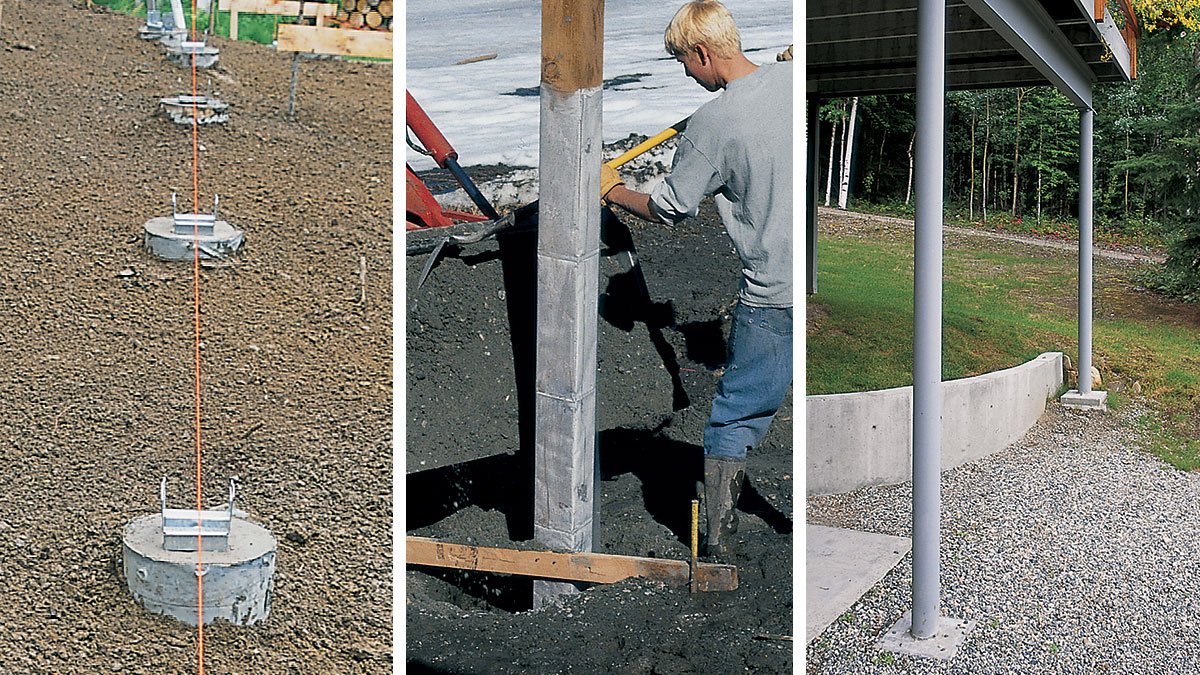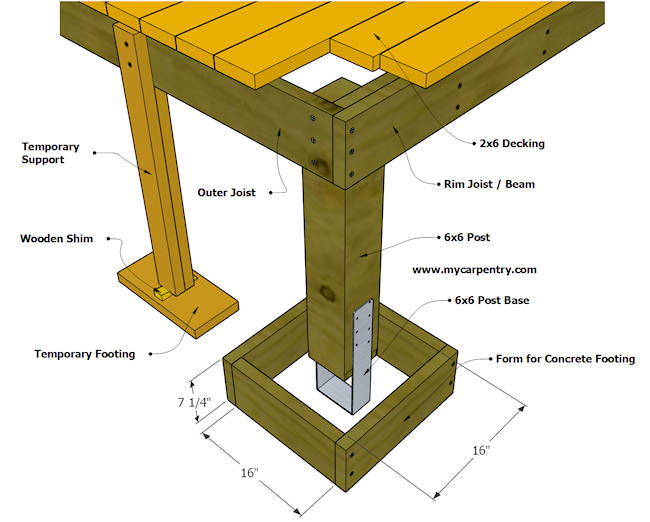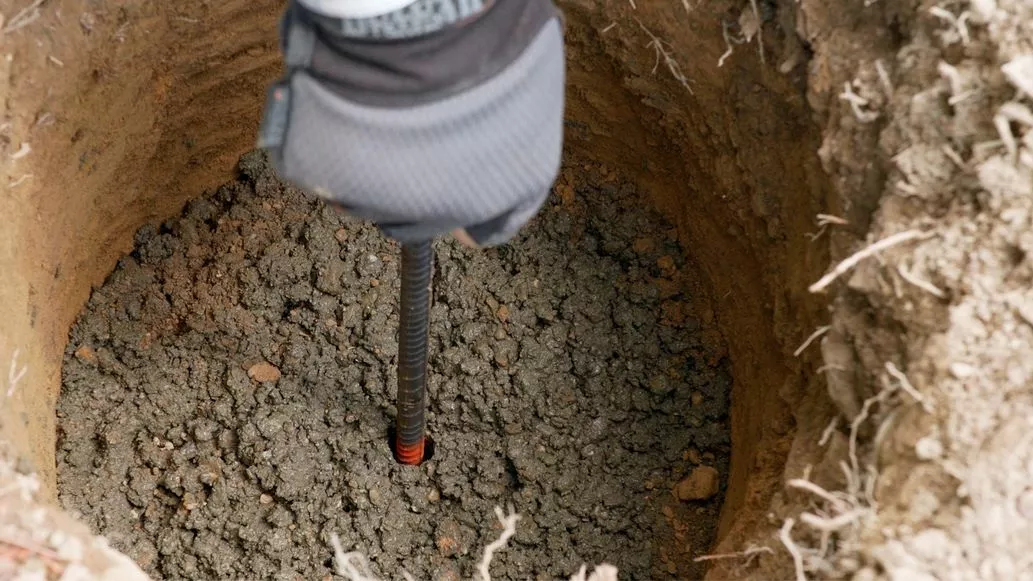Ensure Security and Longevity With Appropriately Installed Deck Footings
Deck footings may not be the most glamorous aspect of deck construction, but they play an important role in ensuring stability and long life. In this conversation, we will certainly check out the significance of appropriate deck footings, elements to consider throughout installment, different types of grounds readily available, detailed setup overview, and upkeep ideas for making sure lasting footings.

Relevance of Proper Deck Grounds
Why are effectively installed deck footings essential for the stability and longevity of your deck? Deck grounds are the structure on which the deck relaxes, moving the tons from the deck to the ground.
First of all, appropriately mounted deck grounds disperse the weight of the deck uniformly, stopping any type of unequal settling or sinking. This is particularly essential in areas with unstable dirt, as it aids to mitigate the threat of the deck changing or falling down. Furthermore, well-installed footings make certain that the deck continues to be degree, stopping any type of structural damage that can take place when a deck ends up being uneven.
Second of all, appropriately set up footings give a solid support for the deck, preventing extreme motion and persuade. This aids to preserve the architectural integrity of the deck, decreasing the danger of crashes or injuries. It also minimizes the wear and tear on the deck, enabling it to stand up to the elements and normal usage for a longer time period.
Factors to Consider for Deck Ground Setup
When mounting deck grounds, there are several important factors to consider for proper installation. Various dirt kinds have various load-bearing abilities, so it is crucial to perform a dirt test to make sure the grounds can support the weight of the deck and its occupants. By taking right into account these aspects, you can guarantee the proper installation of deck grounds and appreciate a steady and resilient deck.
Kinds of Deck Footings to Pick From
There are numerous different kinds of deck footings readily available for you to pick from. Each type has its own advantages and downsides, so it's necessary to consider your particular demands and the conditions of your deck before making a decision.
One usual sort of deck ground is the concrete footing. This involves digging holes in the ground and pouring concrete right into them to create a solid foundation. Concrete footings are durable and provide superb security, making them appropriate for decks in areas with challenging soil problems or high wind tons.
One more choice is the helical pier footing, which includes a steel shaft with helical plates that are screwed right into the ground. These footings are fast to mount and can be utilized in various soil types, consisting of sandy or clay soils. They are also flexible, permitting easy leveling of the deck.
Sonotube grounds are one more popular choice. These footings are created by positioning a cardboard tube in an opening and filling it with concrete. Sonotube grounds are reasonably simple to install and provide ample security for smaller decks or in areas with less requiring soil conditions.

When choosing the kind of deck footing, it's important to think about aspects such as dirt problems, deck dimension and weight, neighborhood building ordinance, and individual choices. By picking the ideal ground kind, you can make sure the security and durability of your deck.
Step-by-Step Guide for Setting Up Deck Footings

Identify the area: Begin by noting the exact setting of each ground using risks and string (Deck Footings). Consider any type of neighborhood building codes or guidelines regarding problem ranges
Dig the openings: Make use of a post hole digger or an auger to dig the openings for the grounds. Typically, a deepness of at the very least 36 inches is recommended for stability.
Degree the openings: Ensure that all-time lows of the holes are degree (Deck Footings). This can be attained by using a degree or a straight board throughout the top of the openings
Include gravel: Place a layer of gravel at the end of each opening to boost drainage and stop the ground from sinking into the dirt with time.
Place the footing types: Place the footing forms into the holes, guaranteeing they are focused and degree. Usage risks to safeguard them in area.
Mix and put concrete: Adhere to the directions on the concrete mix bag to prepare the concrete. Put the concrete into the footing forms, filling them completely.
Smooth the surface area: Make use of a trowel to smooth the surface of the concrete and eliminate any air pockets. Enable the concrete to heal according to the supplier's instructions.
Maintenance Tips for Durable Deck Grounds
Proper upkeep is essential for ensuring the durability and stability of deck grounds. description By on a regular basis evaluating and preserving your deck footings, you can protect against damage and possible security hazards.
Normal cleaning is likewise important for keeping deck footings. Greenery, dust, and particles can accumulate around the footings, which can result in moisture build-up and decay. Cleaning up the grounds regularly, utilizing a brush or a stress washing machine, can help avoid these concerns and expand the life expectancy of your deck.
In enhancement to cleaning, it is essential to maintain the location around the footings clear of any type of blockages. Stay clear of stacking items against the footings or enabling plants to expand too near to them. These blockages can catch dampness and trigger the footings to weaken gradually.
Last but not least, regular resealing of the footings is suggested to safeguard them from wetness and other environmental elements. Applying a waterproof sealant can help prevent water damage and prolong the life expectancy of the footings.
Conclusion
Finally, appropriate installation of deck footings is important for making sure security and durability of your deck. Aspects such as dirt type, load capacity, and neighborhood building ordinance require to be thought about when selecting the best type of deck grounds. Adhering to a detailed guide for installment and normal upkeep will help to make sure the footings remain sturdy and durable.
In this discussion, we will explore the relevance of correct deck grounds, variables to think about during installment, various types of grounds offered, step-by-step installment guide, and maintenance tips for making certain resilient footings. Deck grounds are the foundation on which the deck relaxes, transferring the load from the right here deck to the Check Out Your URL ground.One typical type of deck ground is the concrete footing. Put the ground forms: Place the footing creates into the openings, guaranteeing they are centered and degree.In conclusion, proper setup of deck footings is critical for making sure stability and durability of your deck.